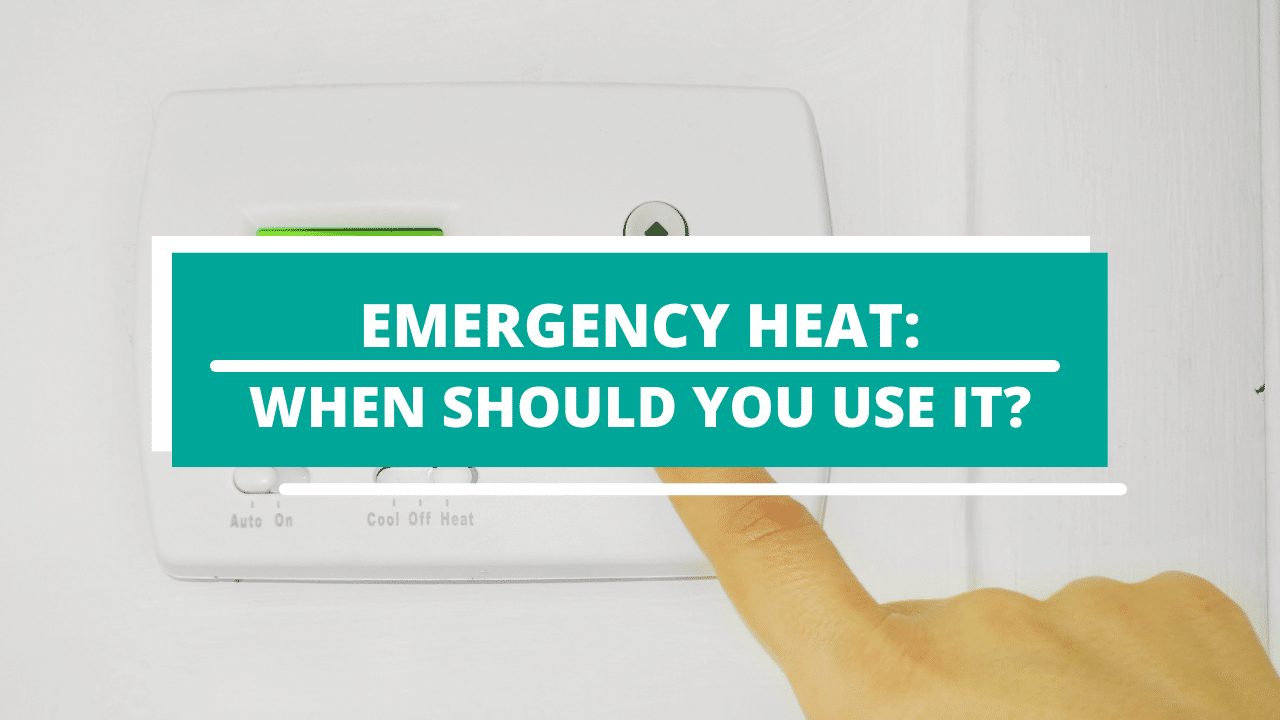If you take a close look at your HVAC system, you may notice an emergency setting and wonder what it does.
Have you taken a closer look at your home's HVAC system? If you have, you may notice the "emergency heat" on it and wondering what it does, and when to use emergency heat.
So, the question is when to use emergency heat. You don't use it when you feel a little chilly. It is for an emergency, that is why it's called emergency heat. It's best to use it when there's a blizzard going on or it gets extremely cold.
Not because it's winter season, you should use it right away. When to use emergency heat is if there's a storm going on, or the cold becomes unbearable.
What is Emergency Heat?
Emergency heat or also known as “auxiliary heat”, is the second stage of your thermostat's heating, which is used when the temperature gets extremely cold or in case of emergency. It is a setting that will be controlling your home’s backup heating system.
When to use emergency heat is when the temperature outside drops down to 35°F and below or if you are experiencing any emergency.
It is called a secondary stage of the heat source of your thermostat because it should only be used as your second or last option if the normal heating system does not make your house warm anymore. (Related: HVAC Options To Control The Heating & Cooling Of Your Sunroom)
Using the emergency heat will escalate your energy bill as a result in an increase in your HVAC system’s energy usage.

How Does Emergency Heat Work?
A heat pump comes with a two-part system, which is the heat pump (primary heat), and the auxiliary heating source (secondary heat). The primary heat pump is placed usually outside of the house, while the second stage of the heating source is located inside.
The auxiliary heating source is designed to be your home's supplemental source of heat when the temperature drops too low, which your heat pump can no longer extract heat from outside. Each type of system and thermostats have different methods for determining when to use emergency heat. The secondary heat source gets triggered automatically when the temperature drops lower than the set threshold.
The heat pump, which is mostly located outside of the house, will collect frost on the coils. When the heat pump is temporarily turned off to defrost the unit, the auxiliary heat source will automatically kick in. This means you don't have to switch to the EM heat setting yourself. The emergency heat mode has a red indicator light. If you turn on the EM heat, your home's thermostat will indicate if the setting is on with the red indicator light.
In addition, although it turned on automatically, you still have the options to manually turn it on. When your emergency heat is turned on, you're signaling your heating system to stop using the heat pump and replace it with the auxiliary heating source.
However, if the red indicator light is turned on, yet you did not activate the emergency heat mode, it could be a sign that there's an ongoing problem with your heat pump. Call HVAC technicians right away to resolve the issue.
An emergency heat should not be used as a substitute for a fully functioning HVAC system. When to use emergency heat is if your primary heating source cannot warm your home anymore. Also, you may need to call HVAC technicians for a check-up and repairs for both your primary and secondary heating source.
Heat Pump VS Emergency Heat
A heat pump works the same as an air conditioner works, but in reverse by moving heat. Instead of getting cold air, you will be getting heat instead, which moves around from one place to another to warm your home.
When the temperature outside drops, your heat pump will have difficulties extracting heat from the outside to reach the warmer temperature you have set on the thermostat.
To aid the extreme cold, your heat pump will then starts to use your backup heat sources to supplement heat. There are some types of heat pumps which uses electric heat coils to boos heat, however, it uses more electricity, which means higher energy bill to pay.
When you set the emergency heat from your thermostat, your heat pump will then stop extracting heat from the outside. Instead, it will only use your backup electric heat coils in heating your home. This means, your heat pump will start to act as an electric furnace, and it does costs more than running a gas furnace.
So, when it gets unbearably cold, there's still a way to warm everyone in your home, although it could mean that you have now more energy bills to pay, it is worth it because it keeps you safe and comfortable during the winter season.

Heating Tips
Conclusion
If you are confused about when to use emergency heat, there are only two factors you should think of. First, when the temperature outside gets too cold, and second is when there's an emergency, such as your heat pump can no longer warm your house.

